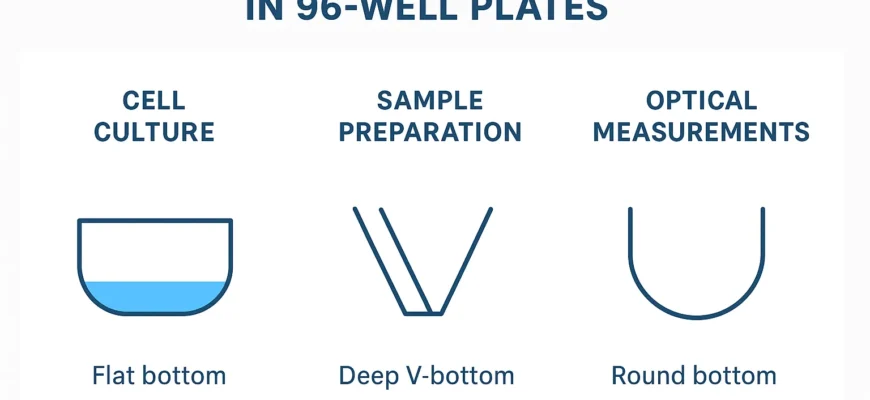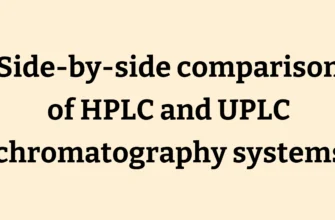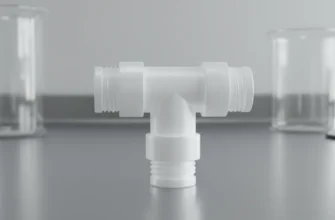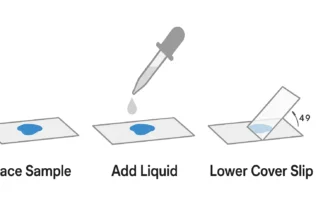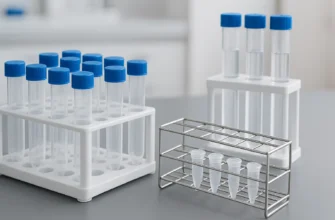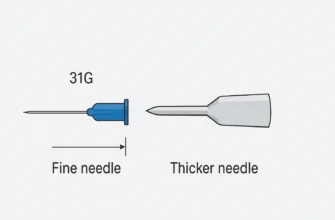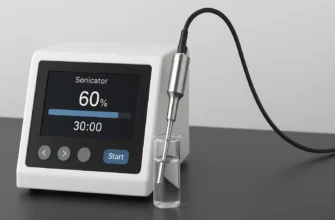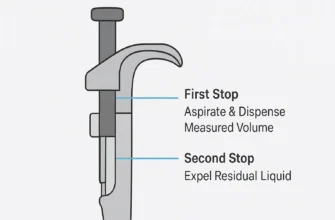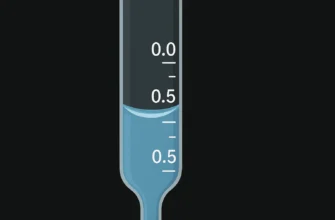How to Select the Best 96 Well Plate for Your Needs
Key Highlights
Here’s what you need to know about selecting a 96 well plate:
-
Well bottom shape—flat (F-bottom), round (U-bottom), or V-bottom—directly impacts cell culture success and sample recovery efficiency
-
Material choice between polypropylene and polystyrene affects optical clarity, chemical resistance, and temperature tolerance
-
Plate color is critical for assay sensitivity, with clear, black, and white plates optimized for different optical measurements
-
ANSI/SLAS standard compliance ensures compatibility with automation and plate readers
-
Specialized designs like PCR plates feature ultra-thin walls for efficient thermal transfer
Introduction
Welcome to the world of high-throughput science! If you work in a modern laboratory, you’ve almost certainly used 96 well plates. These versatile microplates are the backbone of countless experiments, from cell culture to drug discovery. But with so many options available, how do you choose the right one?
Selecting the perfect well plate is essential for achieving accurate and reproducible results. This comprehensive guide will walk you through everything you need to know to make the best choice for your specific application, covering the latest standards and best practices used in modern laboratories.
Key Criteria for Selecting a 96 Well Plate
Choosing the right 96 well plate involves several critical factors that determine experimental success. You need to consider the well’s bottom shape, total volume capacity, and construction material, as these impact everything from sample recovery to optical clarity.
ANSI/SLAS Standards Compliance is perhaps the most fundamental requirement. Plates must adhere to ANSI/SLAS standards 1-4 (2004), which specify exact footprint dimensions of 127.76mm ± 0.25mm length and 85.48mm ± 0.25mm width. This ensures compatibility with automated liquid handlers, plate readers, and robotic systems across different manufacturers.
Another critical consideration is your experimental workflow requirements. Does the plate need to withstand centrifugation? Will you be using organic solvents? Do you need optical clarity for bottom-reading measurements? Understanding these criteria will help you navigate the options and select a plate that ensures the integrity of your results.
Understanding Well Shapes: Flat, U-bottom, V-bottom, and F-bottom Options
The shape of wells in your plate fundamentally affects experimental outcomes. Flat-bottom (F-bottom) plates are the most common choice, providing a uniform surface ideal for adherent cell culture and optical measurements where consistency is key. The flat surface ensures clear imaging and reliable readings in plate readers, making them essential for microscopy applications.
Round-bottom (U-bottom) plates excel in suspension cell culture applications. The curved shape prevents cells from clumping in corners and promotes natural cell aggregation for spheroid formation. This design also facilitates mixing and washing steps, making them ideal for agglutination assays and procedures requiring sample manipulation.
V-bottom plates maximize sample recovery by funneling liquids to a single point at the bottom. This conical shape is superior for centrifugation applications and assays where every microliter counts. They’re particularly valuable for precipitation assays and when working with precious samples requiring complete recovery.
Chimney well (F-bottom) designs represent an advanced variation where each well stands independently, minimizing cross-contamination risk between adjacent wells. These plates maintain the optical advantages of flat bottoms while providing enhanced isolation between samples.
Square vs. Round Wells: Which Works Best for Your Application
The choice between square and round wells significantly influences working volume and experimental efficiency, even within the same standard footprint.
Square wells maximize working volume within each well position. This design efficiently uses available space, making them ideal for:
-
Sample storage applications requiring maximum volume
-
Cell culture requiring larger surface area for growth
-
Assays needing higher reaction volumes without changing plate format
Round wells offer advantages in liquid handling and mixing applications. The curved walls promote better fluid dynamics and complete liquid aspiration without residue remaining in corners. Round wells are preferred for:
-
Suspension cultures where mixing is critical
-
Applications requiring complete sample recovery
-
Procedures involving multiple wash steps
Material Choices in Well Plate 96 Formats
Plate material selection dramatically impacts experimental success. The two primary materials—polypropylene and polystyrene—have distinct properties affecting chemical resistance, temperature tolerance, and optical clarity.
Polypropylene offers exceptional chemical resistance and temperature stability, withstanding temperatures from -196°C to +121°C, making it autoclavable. It demonstrates low binding properties for proteins and nucleic acids, ensuring maximum sample recovery. Polypropylene plates are ideal for:
-
Sample storage and compound libraries
-
PCR applications requiring thermal cycling
-
Applications involving organic solvents
Polystyrene provides superior optical clarity, naturally transparent properties essential for optical measurements. It offers excellent performance for:
-
Absorbance and fluorescence assays requiring clear optics
-
Cell culture with appropriate surface treatments
-
Microscopy applications requiring optical clarity
Glass-bottom plates represent the premium option for high-resolution imaging, offering superior optical flatness and minimal background fluorescence. These specialized plates enable:
-
Confocal microscopy with exceptional image quality
-
High-resolution fluorescence imaging
-
Applications requiring both top and bottom optical access
Surface Treatments and Coatings for Specialized Experiments
Standard materials often require modification for specialized applications. Surface treatments alter plate properties to enhance performance for specific experimental needs.
Tissue Culture (TC) Treatment is the most common modification, converting hydrophobic polystyrene surfaces to hydrophilic ones that support cell attachment and growth. This physical surface treatment makes surfaces more favorable for adherent cell culture by increasing surface energy and promoting protein adsorption necessary for cell adhesion.
Low-attachment surfaces create the opposite effect, preventing cell adhesion for spheroid culture and suspension applications. These specialized coatings maintain cells in suspension, preventing unwanted attachment.
Critical certifications ensure experimental integrity:
-
RNase/DNase-free: Essential for nucleic acid work to prevent sample degradation
-
Pyrogen-free: Critical for cell culture applications
-
Non-cytotoxic: Verified safe for living cells
-
Sterile: Gamma-irradiated to achieve Sterility Assurance Level (SAL) of 10⁻⁶
Practical Considerations for Laboratory Use
Modern laboratories rely heavily on automation, making ANSI/SLAS compliance essential for seamless integration with liquid handlers, plate readers, and robotic systems. These standards ensure consistent performance across different instrument platforms and manufacturers.
Temperature considerations are crucial for plate selection. Polypropylene plates handle extreme temperatures from -80°C to +121°C, while polystyrene plates are limited to -20°C to +60°C. Choose materials based on your storage and processing temperature requirements.
Centrifugation capabilities vary significantly between plate types. Polypropylene plates typically withstand centrifugation up to 4,800 x g, while polystyrene plates are limited to 1,000-4,800 x g depending on design. Always verify centrifugation specifications before use.
Color Selection: Clear, Black, or White 96 Well Plates
Plate color profoundly affects assay sensitivity and background signal, making this a critical decision based on your detection method.
Clear plates provide excellent optical transparency for absorbance measurements and visual observation. Made from transparent polystyrene, they allow light passage through well bottoms, making them essential for:
-
Colorimetric assays measuring absorbance changes
-
Cell imaging and microscopy applications
-
Visual sample inspection and monitoring
Black plates are engineered to absorb light and minimize background fluorescence. The black material reduces light scatter between wells and eliminates crosstalk, resulting in higher signal-to-noise ratios for:
-
Fluorescence assays requiring maximum sensitivity
-
Applications where background reduction is critical
-
High-density screening where well-to-well interference must be minimized
White plates reflect light back toward detectors, maximizing signal intensity for luminescence applications. The reflective properties significantly enhance weak light signals in:
-
Luminescence and bioluminescence assays
-
Applications requiring signal amplification
-
Assays with low light output requiring maximum detection sensitivity
Specialized Types: PCR and Deep Well Plates
Beyond standard cell culture and assay plates, specialized designs address specific technical challenges in molecular biology and sample processing applications.
PCR plates feature ultra-thin, uniform walls (typically 0.2mm) enabling rapid and efficient heat transfer essential for thermal cycling. Key specifications include:
-
Maximum volumes of 200-300 μL with working volumes under 100 μL
-
Temperature resistance from -80°C to +121°C
-
Raised well rims optimized for heat-sealing methods
-
Low-profile designs minimizing evaporation during cycling
Deep well plates accommodate larger sample volumes up to 2mL per well while maintaining the standard 96-well footprint. These plates feature:
-
Enhanced chemical resistance for sample storage
-
Compatibility with automated liquid handling systems
-
Temperature stability for long-term storage applications
Minimizing Errors and Ensuring Sterility
Contamination prevention is critical for reliable experimental results. Most laboratories prefer pre-sterilized plates that undergo gamma irradiation or ethylene oxide treatment to achieve SAL 10⁻⁶.
Sterilization methods include:
-
Gamma irradiation: Most common, achieving thorough sterilization without heat damage
-
Ethylene oxide (EO): Suitable for heat-sensitive materials but requires aeration time
-
Autoclaving: Only suitable for polypropylene plates at 121°C for 15 minutes
Cross-contamination prevention strategies:
-
Use high-quality sealing films or cap mats compatible with your plate design
-
Implement proper pipetting techniques to avoid aerosol generation
-
Consider chimney-well designs that physically isolate samples
-
Maintain appropriate laboratory practices including tip changes between samples
Quality Assurance and Certification Standards
Modern 96 well plates undergo rigorous quality testing to ensure consistent performance. Leading manufacturers implement ISO 9001 quality management systems and provide comprehensive certifications.
Critical quality parameters include:
-
Dimensional accuracy within ANSI/SLAS tolerances
-
Optical clarity specifications for bottom-reading applications
-
Chemical resistance verification for intended solvents
-
Contamination testing for nucleases, pyrogens, and cytotoxic substances
Lot traceability enables tracking plates back to production batches, facilitating quality control and troubleshooting when issues arise.
Reuse Considerations and Environmental Impact
While most 96 well plates are designed as single-use consumables, some applications may consider reuse under specific conditions. Polypropylene plates may withstand limited reuse cycles when properly cleaned and sterilized, but this introduces risks of:
-
Cross-contamination between experiments
-
Degraded optical properties affecting measurements
-
Reduced mechanical integrity from repeated handling
Environmental considerations are driving development of more sustainable options, including plates made from recycled materials and improved packaging to reduce waste.
Conclusion
Selecting the optimal 96 well plate requires careful consideration of multiple factors including well geometry, material properties, surface treatments, and compatibility with your experimental workflow. Understanding how these elements interact with your specific applications ensures reliable, reproducible results.
The key is matching plate specifications to experimental requirements: F-bottom plates for optical measurements and cell culture, V-bottom for maximum sample recovery, polypropylene for chemical resistance and temperature extremes, and polystyrene for optical clarity. Always verify ANSI/SLAS compliance for automation compatibility and choose appropriate surface treatments and certifications for your applications.
Modern quality standards ensure that properly selected plates will perform consistently, but the diversity of options means that taking time to evaluate your specific needs will ultimately determine experimental success.
Frequently Asked Questions
Can 96 well plates be reused, or are they single-use only?
Most 96 well plates are designed as single-use consumables to ensure optimal performance and prevent contamination. While some polypropylene plates can theoretically be reused after proper cleaning and autoclaving, this practice introduces significant risks including cross-contamination, reduced optical clarity, and compromised mechanical integrity. Reuse is generally not recommended for critical applications.
Are all 96 well plates compatible with automated liquid handlers?
Not automatically, but most modern plates are compatible when they meet ANSI/SLAS standards. To ensure compatibility with automation systems, always verify that plates adhere to ANSI/SLAS standards 1-4 (2004), which specify exact footprint dimensions and well positioning tolerances. These standards guarantee compatibility with most automated liquid handlers and plate readers.
What factors should I consider when choosing between different 96 well plate materials?
Material selection depends on your specific application requirements. Choose polypropylene for chemical resistance, temperature extremes (-196°C to +121°C), low protein binding, and applications involving organic solvents. Select polystyrene for superior optical clarity, cell culture applications (with appropriate surface treatment), and assays requiring transparent optics. Consider specialized glass-bottom plates for high-resolution microscopy requiring exceptional optical quality.

